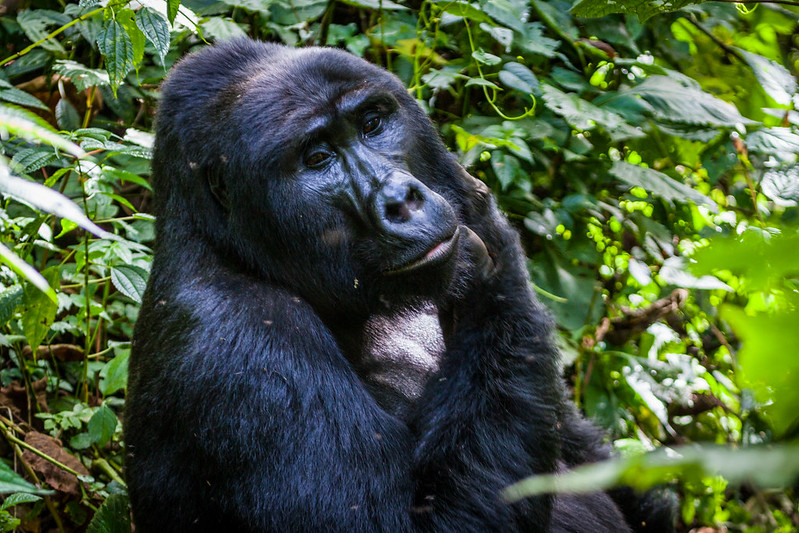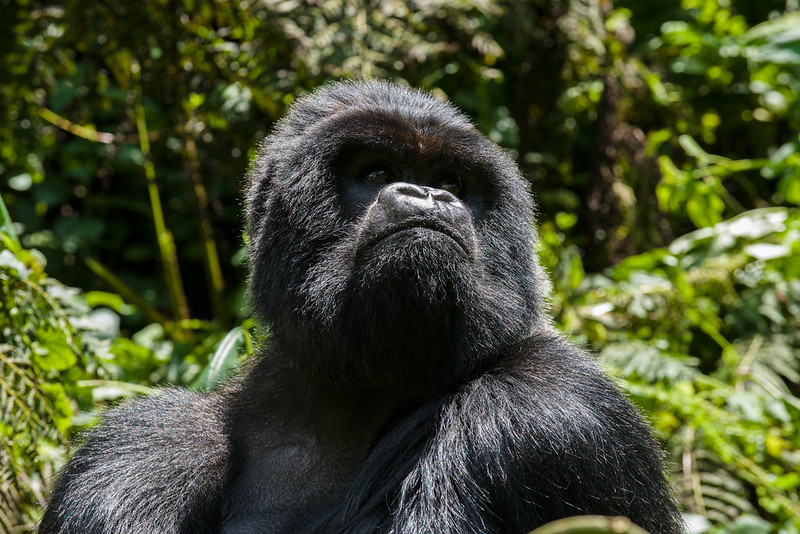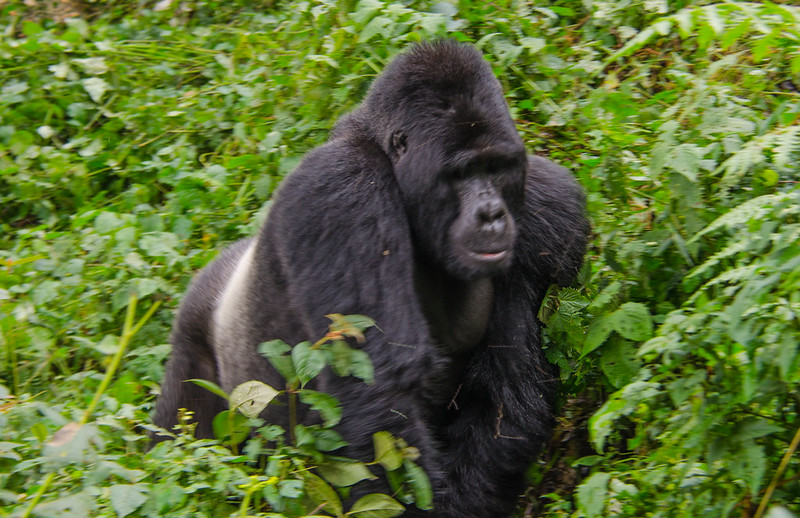Gorilla tracking in Uganda. Going on a gorilla tracking safari in Uganda is sure to…
Gorilla Mating and Reproduction
Gorilla Mating and Reproduction, How do gorillas find a mate? The biggest ape that lives on the ground is the gorilla. They live in the forests of East and Central Africa. There are two types of gorillas: western gorillas and eastern gorillas. There are four different types of gorillas: mountain gorillas, cross-river gorillas, eastern lowland gorillas (also called Grauer’s gorillas), and western lowland gorillas. After bonobos and chimps, gorillas are the next most related animal to humans. They both have about 98% of the same DNA. In the deep jungles of Africa, gorillas eat fruits, leaves, and tree shoots.
There can be up to 30 gorillas in a troop. A gorilla group usually has one alpha male silverback, as well as other males, females, children, and their offspring. Most gorilla species don’t interact with other groups very often, but western lowland gorillas have been seen doing it. The powerful silverback leads the other animals. He picks out what should be done and when. Most of the time, the gorilla group is calm, which leaves the silverback to deal with leopards, males that are alone, and other silverbacks from other groups. If there are other silverbacks in the group, they will help him fight off thieves and other threats.
Reproduction and Mating in Gorillas
How do gorillas get together and have babies? Before we can understand how our species evolved and how we act, we need to know what happens in the wild with our closest cousins, the great apes. There are many things that affect how gorillas mate, and we also need to understand how they have babies. Female gorillas are ready to have babies when they are 10 to 12 years old. The ovulation cycle starts early, around age 6, but they can’t have children until they are 10 years old.
The powerful silverback can get to any female without any problems. Most of the men leave the group when they reach adulthood. Once they leave their dad’s group, they either go it alone or form groups with other single men until they can kidnap girls from other groups. Most females left their father’s group too, so they wouldn’t be bred with other females.
Studies on mountain gorillas have shown that when females stay with their original groups for a long time, they avoid the dominant silverback/father to avoid having babies with him. Women gorillas would rather mate with one of the group’s less submissive males than with her father.
A gorilla is not likely to have a baby from her father, even if she is pushed to. The only places where this happens often are cross-river gorilla groups.
Going to a mate
All year long, people mate and have babies. As soon as the females in the group start to ovulate, the strong silverback mates with all of them. It’s not possible to see when a female gorilla is ready to mate like it is with chimps. Most of the time, the female starts the mating process as soon as she is ready. A female ape that is ready to mate will carefully approach the dominant male, making long eye contact and puckering her lips.
If he doesn’t answer, she’ll slap the ground as she walks up to him to get his attention. If the dominant male is busy or doesn’t react after several tries, she might be open to mating with another male in the group.
The dominant silverback can, however, get a female to mate by chasing her and nuzzling or grunting at her. If the female is unsure or won’t give up, the silverback may charge her and slap her to get her to give up. A study done in 1982 found that when a silverback was angry at a certain female, she started mating even though she wasn’t in estrus. The female and silverback mate on the ground, with the silverback on top of her.
In what way long does ape sex last? During the estrus period of a female gorilla, which happens about every three hours (or every two hours in some cases), they have sex for about fifteen seconds on average. In chimpanzee groups, there is more interference during mating, but in gorilla groups, there is more fighting between males. Chimpanzees vs. Gorillas
Mates for gorillas
The female seems to kneel down as she ends the act of copulation. People used to think that bonobos and humans were the only ones who could mate face-to-face, but photos have shown different kinds of gorillas having sex while looking right at each other.
There is a lot of sex between gorillas for fun and sport. To keep the powerful silverback from mating with other females, female gorillas often have sex with him to get his favor. Some stories say that pregnant females mate with silverbacks to stop other healthy females from getting pregnant. When the silverback pays attention to a female ovulating, it makes other females in the group compete with her.
In all gorilla types, the dominant silverback likes to mate with moms who are older and have more experience. Western gorilla males usually mate with every female in the group, even if she is pregnant. Mountain gorillas with silverbacks will only mate with a female that is viable.
It is important to know that silverbacks form close, long-lasting bonds with the females in their group. However, when he gets too old or stops reproducing, they will start to leave him for another group. Some will stay with the powerful silverback, but if he dies, they will join another group. Throughout their lives, females have been seen moving groups more than once. This is what they do to keep their kids safe in the future.
If the adult silverback dies before the baby is weaned, the new male will kill the baby.
Gorillas having babies and marriage
What does an ape do after they mate? If they are able to mate, the female will be pregnant for about eight and a half months. About every four years, a female gorilla has a baby. When she gets pregnant, the hump changes shape and the breasts get bigger, but not as much as in people. The female looks uncomfortable, eats a lot, and stretches a lot on the day of birth. Most of the time, women give birth in the morning. A female gorilla will have about eight babies in her lifetime, but only a few will grow up to be adults.
Males do not actively care for the babies, and the babies can only survive with their mothers. The silverback’s job is to make sure that the other animals in the group accept new babies. He will protect them from being picked on by other animals in the group, so the mother will stay close to the main silverback for the first five months to feel safer.
The female holds the baby in her hands for the first four months. For the first four months, the baby suckles from the mother’s breast every three hours. Baby will be able to walk a few meters away from mom for short amounts of time after four months. They will also be able to ride on mom’s back.
When it’s 12 months old, it will be sure of itself enough to walk five meters away from its mother. By the second year, there is even more space between the mother and child, and they spend more time apart. The mother weans the child at 30 months. Babies will usually nurse until they are about four years old. The mother starts to ovulate again once the child is weaned and starts to build its own nest.
Over half of gorillas don’t make it to adulthood because they die so often. One reason they don’t die too often is that they depend on their moms for a long time. Changes in the way the group works and the arrival or takeover of a new silverback are like giving all kids who are still nursing the death sentence. The silverback usually kills all the babies so that it can mate with an adult female. Want to meet the gentle giants where they live in the wild?


